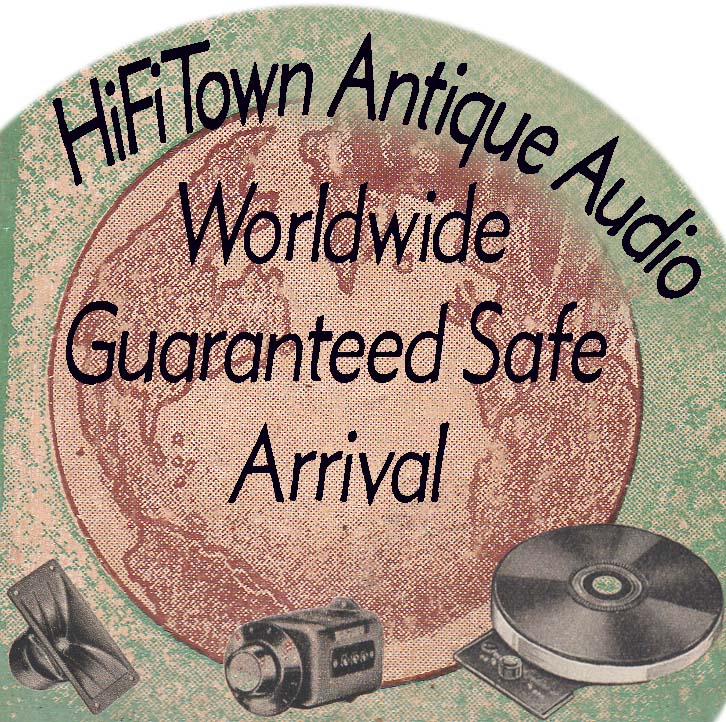The notion & knowledge that "age" (passage of time & use) CAN ACTUALLY IMPROVE certain vintage speakers has been known a long time. Certainly not a modern notion or in any way purely nostalgic nonsense!
A particularly candid account below, by aloudspeaker enclosure engineer…published May 1948. A British HiFi specialist in the era of VitaVox, Baker, Voight, Klipsch & Lowther…
LOUDSPEAKER LIFE-
The question "How long will it last?" is often asked about a loudspeaker, but so much depends upon the conditions of use that it is impossible to give a plain answer.
A loudspeaker in a steam laundry may wilt in a few weeks, whereas the same type may last 10 or 15 years in a dry atmosphere. Tropical finishes will help a loudspeaker to resist extremes of climatic conditions, but reasonable protection from exposure is obviously necessary. Damp, dirt and metal filings are the loudspeaker's greatest enemies.
Given reasonable conditions, the best way to estimate length of service is by actual experience. I know of two or three extension speakers which have been in regular use for more than 14 years. The cabinets have been well cared for and are almost as new, and the performance is still satisfactory. I have come to the conclusion that cones improve with age, especially under dry conditions. It is also clear that the continual movement of the cone assembly during use tends to free the suspension and lower the bass resonance.
These factors often result in an improvement in quality as time goes on. I will cite two personal experiences in support of this rather interesting point. My friend, Mr. Beaumont, of Ambassador Radio, recently devoted many hours to the calculation of the correct exponential reflex corner loading for a 12 inch speaker for which we supplied a specially made unit with soft suspension. I was surprised to be told by Mr. Beaumont that the new speaker was not so good as an old one which had been used for the development tests. An examination with oscillator revealed the fact that the old speaker, which had a bass resonance at 65 cycles some five years ago, was now down to 35 cycles on open baffle, having absorbed a good deal of punishment during the period. As the resonance of the new unit was about 45 cycles, and as these technical men are hard to please, we had perforce to build another speaker with more compliance in the centring device.
My second illustration comes from Holland-a small country of which I am rather fond, as it was the only one in the world to import our speakers before the war. When I re-visited the country early in 1947, I was shown two loudspeakers which were nearly ten years old and which had been carefully preserved during the German occupation. Originally 10,000 lines, I estimated that the flux density had dropped to 9,000. In the post-war model the flux density had been stepped up to over l2,OOO lines, and my agents promised to make a comparison immediately new supplies were received. I was again surprised to be informed in due course that the quality of reproduction of the old speakers was preferred, in spite of the difference in sensitivity. It was found that the bass resonance had dropped from 70 cycles to nearly 50, and the maturity of the cones was having its usual effect. Such a test is only possible in the rather unusual case where a certain type of unit has been continued for a number of years. I hope the reader will forgive the personal tone of this chapter, but it seems to be the easiest way to answer the original question.
It means that, with careful use, the performance of a good loudspeaker can reasonably be expected to improve, just as the tone of a good piano settles down after the first year or two. One gathers from remarks made by M r. Shorter of the B. B.C. Research Station during a recent lecture that they have loudspeakers of pre-war vintage, (I believe about 1934/5) of which they still think very highly.
